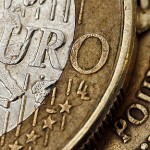Yesterday’s trade saw EUR/USD within the range of 1.0971-1.1129. The pair closed at 1.1089, soaring 1.06% on a daily basis, or the most considerable daily gain since June 10th, when it appreciated 1.14%. The daily high has also been the highest level since July 13th, when the cross registered a high of 1.1198.
At 6:55 GMT today EUR/USD was down 0.20% for the day to trade at 1.1065. The pair touched a daily low at 1.1054 at 6:59 GMT.
Fundamentals
United States
Services PMI by Markit – preliminary estimate
Activity in the US sector of services probably remained little changed in July, with the corresponding preliminary Purchasing Managers Index coming in at a reading of 55.0. In June the final seasonally adjusted PMI stood at 54.8, confirming the preliminary value. It has been the lowest reading since January, when the indicator was reported at 54.2. The PMI is based on data collected from a representative panel of more than 400 private sector companies, which encompasses industries such as transport and communication, financial intermediaries, business and personal services, computing & IT and hotels and restaurants. Values above the key level of 50.0 indicate optimism (expanding activity). In case a larger-than-projected improvement in services sector activity was reported, this would support demand for the US dollar. The preliminary data by Markit Economics is due out at 13:45 GMT.
CB Consumer Confidence Index
Confidence among consumers in the United States probably lowered in July, with the corresponding index coming in at a reading of 100.0 from 101.4 in June. The latter has been the highest index value since March, when the gauge was reported at 101.4.
This indicator measures the level of individuals confidence in the US economic development. It is considered as a leading indicator, as it gives an early insight into consumer spending, which accounts for most of the nations GDP.
The index has 1985 as a base year, when the base value was 100. This year was chosen, as it was neither a peak nor a bottom. The Consumer Confidence Index (CCI) is calculated on the basis of a household survey, which reflects consumers opinion on current conditions and future expectations regarding the US economy. Opinions on current conditions account for 40% of the index, while expectations of future conditions account for the remaining 60%. The surveys objective is to define consumer attitudes and buying intentions, while the data are filtered by age, income and region.
A sample of 5 000 households in the United States serves as a basis for the survey. Each month respondents give their opinion based on the answers to five questions: Current business conditions; Business conditions for the next six months; Current employment conditions; Employment conditions for the next six months; Total family income for the next six months. Respondents may answer each question as “positive”, “negative” or “neutral”.
Each of the five questions is given a “relative value”, or the positive responses are divided by the sum of the positive and negative responses. The relative value is then compared against each relative value from the base year (1985). The comparison of the relative values leads to the “index value” for all five questions. These index values are then averaged in order to form the value of the CCI.
In case the index dropped more than anticipated, this might lead to a sell-off of the US dollar, as lower confidence suggests a lesser willingness to spend and, respectively, a stagnating economic growth. The Conference Board research group is to publish the official index reading at 14:00 GMT.
Bond Yield Spread
The yield on German 2-year government bonds went as high as -0.212% on July 27th, or the highest level since July 22nd (-0.210%), after which it slid to -0.219% at the close to remain unchanged on a daily basis.
The yield on US 2-year government bonds climbed as high as 0.682% on July 27th, after which it fell to 0.658% at the close to lose 2.4 basis points (0.024 percentage point) for the day.
The spread between 2-year US and 2-year German bond yields, which reflects the flow of funds in a short term, shrank to 0.877% on July 27th from 0.901% on July 24th. The July 27th yield spread has been the lowest one since July 14th, when the difference was 0.868%.
Meanwhile, the yield on German 10-year government bonds soared as high as 0.705% on July 27th, after which it slid to 0.696% at the close to lose 0.004 percentage point compared to July 24th, while marking a fourth straight day of decline.
The yield on US 10-year government bonds climbed as high as 2.266% on July 27th, after which it slipped to 2.221% at the close to lose 4.1 basis points (0.041 percentage point) compared to July 24th.
The spread between 10-year US and 10-year German bond yields narrowed to 1.525% on July 27th from 1.562% on July 24th. The July 27th yield difference has been the lowest one since July 10th, when the spread was 1.505%.
Pivot Points
According to Binary Tribune’s daily analysis, the central pivot point for the pair is at 1.1063. In case EUR/USD manages to breach the first resistance level at 1.1155, it will probably continue up to test 1.1221. In case the second key resistance is broken, the pair will probably attempt to advance to 1.1313.
If EUR/USD manages to breach the first key support at 1.0997, it will probably continue to slide and test 1.0905. With this second key support broken, the movement to the downside will probably continue to 1.0839.
The mid-Pivot levels for today are as follows: M1 – 1.0872, M2 – 1.0951, M3 – 1.1030, M4 – 1.1109, M5 – 1.1188, M6 – 1.1267.
In weekly terms, the central pivot point is at 1.0951. The three key resistance levels are as follows: R1 – 1.1077, R2 – 1.1323, R3 – 1.1449. The three key support levels are: S1 – 1.0705, S2 – 1.0579, S3 – 1.0333.





